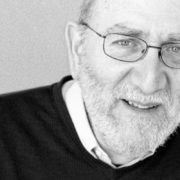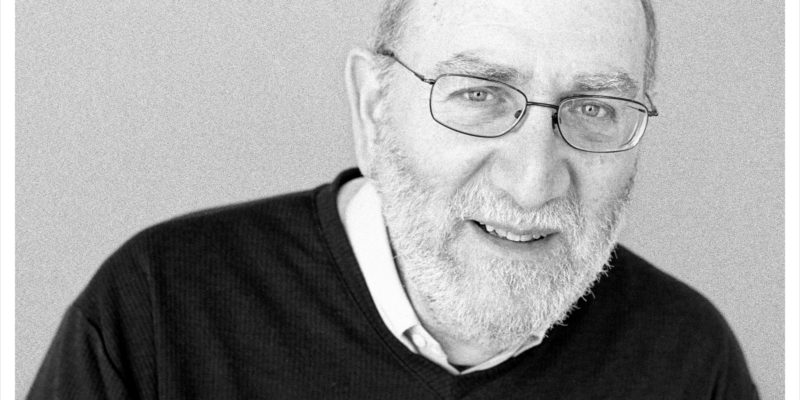What’s Your Life Tempo – Crescendo or Diminuendo?

I’m a slightly above-average guitar player. One would hope so since I started playing in 1959. We’re talking Bill Haley and the Comets and early Elvis time zone, folks.
About a dozen years ago, I discovered a player by the name of Tommy Emmanuel. If you are an acoustic guitar player or aficionado, you know this native Australian to be unarguably the greatest acoustic player on the planet. Chet Atkins, a Tommy mentor, endowed him with a Certified Guitar Player designation – one of only four or five such crowns awarded by Atkins before he passed.
I consider Tommy E. my guitar mentor. I have nearly every one of his CD’s. I’m learning from his instructional DVDs and tablature books. I’ve attended every performance he has had in the Denver area over the last 10 years. I’ve actually met him twice, have two autographed instructional books and have a photo with him (it’s a bad cell phone photo so it’s staying in the camera gallery – trust me on it!)
 To give you an idea of this man’s talent (and in hopes of adding you to his fan club) click this link to one of his masterful creations. As a testament to his talent and popularity, you can find hundreds of YouTube videos of his performances.
To give you an idea of this man’s talent (and in hopes of adding you to his fan club) click this link to one of his masterful creations. As a testament to his talent and popularity, you can find hundreds of YouTube videos of his performances.
One thing I’ve observed is that Tommy seems to live his life in constant crescendo, which for you non-musicians means “an increase in intensity”. He is a prolific songwriter, active teacher and does over 300 live performances a year worldwide. Now in his 60’s, he doesn’t seem to be slowing down.
Despite being able to do things on an acoustic guitar that are often mind-blowing, Tommy’s credo is “to be better tomorrow than I am today.” I remember him saying that he doesn’t let a day go by without working on and refining his craft. This after nearly six decades playing the instrument.
When he is performing, Tommy sometimes will pour on the “crescendo” and leave the planet with his incredible technique, creativity, and mastery of the instrument. I find myself kind of tuning him out when he soars into the stratosphere.
I like him best when he pours his heart and incredible connection with his music into his softer, slower songs – like “Questions” or “Somewhere Over the Rainbow” or “Digger’s Waltz”. That’s when Tommy reverts to “diminuendo”, which means “a decrease in loudness and intensity.” He lowers the volume and the pace but without sacrificing the emotion.
I thought of Tommy this morning as I was reviewing some notes I had made in a journal a few years ago while reading Steven Covey’s “Seven Habits of Highly Successful People.” Covey asks: “Are you living your life in ‘crescendo’ or ‘diminuendo’?”
His definitions for the terms, however, stray a bit from the musical meanings:
- Crescendo – greater energy and volume, strength and striving
- Diminuendo – lower the volume, back off, play it safe, become passive, whisper away your life
Tommy E. may “lower the volume” but he doesn’t back off, play it safe, show passivity and has by no means been whispering away his life. He is one of the most ubiquitous, energetic musicians out there.
But I get where Covey is going with the question. Are you winding up, or winding down?
I’ve asked myself: at 76, is sustainable crescendo possible or realistic? Should I accept Covey’s definition of diminuendo as a given, a necessity, a rite, an assumption, an automatic in my life as many seem to do?
Our culture would have us play to diminuendo as we age. The signs are all around us: a continuing (but diminishing) emphasis on the unnatural concept of retirement; a proliferation of retirement communities; youth-oriented media and institutions; open and rampant age discrimination.
I’m taking a stand for the crescendo role.
But I’ll admit it’s harder than I thought to make the leap. Naps come way too easy each day; the drive to seek adventure and newness has a pretty thick crust of “you’re too old” enculturation to cut through. Learning is as deep but takes a good bit longer. A look in the mirror in the morning generates the question: “Do I really want to put new strings on that??”
But I’ve “whispered away” enough of my life already. Got some serious catching up to do – and that takes crescendo.
Crescendo into our 70’s, 80’s, 90’s is possible. We have a multitude of examples to turn to. There are the notable outliers like billionaires Ken Langone, T. Boone Pickens and Warren Buffett that I wrote about in my 7/2/18 blog “Time For a New Cultural Portal”. But there are thousands of centenarians – the fastest growing segment of our population percentage-wise – that will attest to the validity and empowerment of never-ending crescendo.
When we give in to diminuendo, we might as well – in the words of Dan Sullivan – “send an email to the universe that it can start taking the parts back.”
Tommy’s crescendo attitude and his creative perfectionism are highly inspirational. But, someday, the universe will take Tommy’s parts back – I hope it isn’t in my lifetime. But when it does, I’d bet on it happening while he is soaring “off the planet” in one of his musical creations, not slowing down for a minute.
Shouldn’t that be how we all should go?




 Two tests, eight minutes
Two tests, eight minutes
 said: “When are you going to tell your face?”
said: “When are you going to tell your face?”

 Apparently, according to the WHO, the majority of the world’s population regularly clocks six or fewer hours a night, thus putting our health in jeopardy. According to this collection of experts, lack of sleep increases the risk of obesity, cancer, diabetes, Alzheimer’s and other dementias.
Apparently, according to the WHO, the majority of the world’s population regularly clocks six or fewer hours a night, thus putting our health in jeopardy. According to this collection of experts, lack of sleep increases the risk of obesity, cancer, diabetes, Alzheimer’s and other dementias.




 Laslett predicted, because of declining births and longer lives, an emerging life stage he called the “Third Age.” With it comes a much simpler and appropriate four-portal alignment which Freedman advocates:
Laslett predicted, because of declining births and longer lives, an emerging life stage he called the “Third Age.” With it comes a much simpler and appropriate four-portal alignment which Freedman advocates: Laslett’s “third age” represents a liberation of those of us in our (in Freedman’s words) “ – sixties, seventies and beyond from the psychic strain and misclassification and from the very real consequences of being assigned to ‘mass indolence.'”
Laslett’s “third age” represents a liberation of those of us in our (in Freedman’s words) “ – sixties, seventies and beyond from the psychic strain and misclassification and from the very real consequences of being assigned to ‘mass indolence.'” That stirring you feel might just be your third age trying to move from cocoon to butterfly. My encouragement to you is to listen, not hasten it, or cover it over with cultural constructs, comparison, and comfort-zone living and thus kill the butterfly.
That stirring you feel might just be your third age trying to move from cocoon to butterfly. My encouragement to you is to listen, not hasten it, or cover it over with cultural constructs, comparison, and comfort-zone living and thus kill the butterfly.